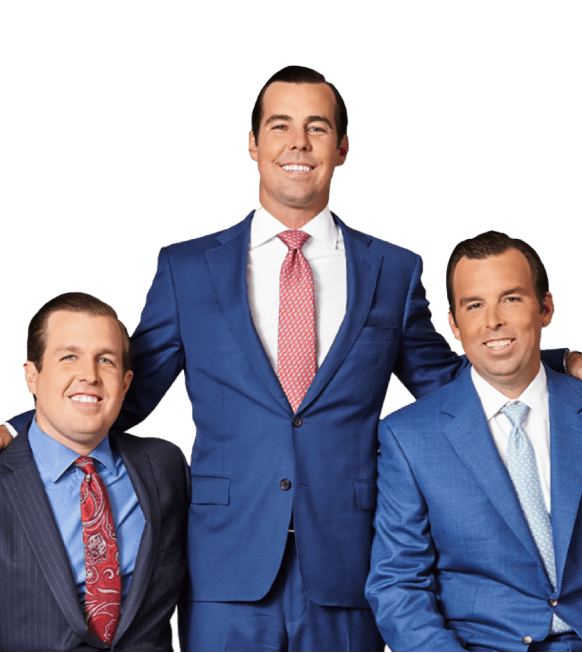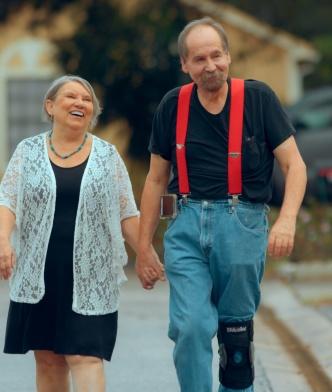What Should I Do if My Apple Watch Didn't Detect My Heart Issue?
What Should I Do if My Apple Watch Didn't Detect My Heart Issue?
- The Fee Is Free Unless You Win®.
- America's Largest Injury Law Firm™
- Protecting Families Since 1988
- 20 Billion+ Won
- 1,000+ Lawyers Nationwide
Free Case Evaluation
Porter Ranch Gas Leak
Jacob T. Rodgers v. City of Gainesville D/B/A Gainesville Regional Utilities
Estate of Frank Townsend v. RJ Reynolds, et al.
Morgan Stanley Data Security Litigation
Stephen Davis v. Levon Clark, Ricardo Williams, Marty Grifka and Derek Pak
McAdams v. Monier Lifetile, LLC
Coleman v. Martinez
Gold v. Lumber Liquidators
Clemmons, Patrick
Brink v. Ruiz

The attorneys featured above are licensed in Florida. For a full list of attorneys in your state please visit our attorney page.
What Should I Do if My Apple Watch Didn't Detect My Heart Issue?
The Apple Watch is a sophisticated piece of technology that provides users with many convenient functions. These watches connect to the user’s iPhones and can help them to juggle a number of daily tasks.
Apple Watches can make calls, send text messages, run apps, and track your heart rate. The heart rate monitor is intended to guide people through their workout sessions.
This helps to determine the number of calories burned in a given exercise session. Apple Watch automatically takes a heart rate measurement once every 10 minutes.
But what happens if your Apple Watch fails to detect your heart rate accurately? You might find yourself wondering what to do if Apple Watch does not detect heart issues appropriately.
Below, we will discuss the possibility of legal action in this type of situation. When you are unsure about what to do if Apple Watch does not detect heart issues that it should, reach out to a skilled attorney.
When you need legal representation, contact a legal expert at America’s largest personal injury law firm–Morgan & Morgan. Our seasoned professionals have plenty of experience in fighting for the rights of our clients.
For a no-cost legal consultation to discuss the facts of your case, complete the simple contact form on the Morgan & Morgan website today!
Understanding Apple Watch Heart Monitors
The Heart Rate app comes standard on most Apple Watches. To monitor your heart rate, the Apple Watch includes a sensor on the back of the case. Two small lights monitor blood flow through the wearer’s wrist.
There are several factors that influence the accuracy of a heart rate reading from the Apple Watch.
Understanding the function of the Heart Rate app can help you know what to do if Apple Watch does not detect heart issues. First, it is important to properly calibrate your Apple Watch to track your heart rate.
Also, consider the following tips for ensuring a more accurate reading from your Apple Watch:
Check the Fit of Your Watch
It is important to ensure that your watch fits your wrist. If your watch is overly loose or ill-fitting, the Heart Rate app will not work properly.
Some people do not enjoy the feeling of a snug watch on their wrist. However, keeping the Apple Watch firmly against your skin is crucial to getting an accurate heart rate.
If you’re wondering what to do if Apple Watch does not detect heart issues, make sure that you wear your watch against your skin. People who use their Apple Watch to track their calories often adjust the watch band to be tighter when they work out.
Recognize the Influence of Cold Weather
The Heart Rate app works by monitoring blood flow beneath the skin. In cold temperatures, less blood flows close to the skin’s surface. Because of this, the Apple Watch will provide less accurate readings in cold weather.
Prevent Irregular Movements
Those who use their watch to track their heart rate during exercise should avoid irregular movements. For instance, sports like boxing and tennis involve bumpy movements that can confuse the sensor.
Potential Medical Uses of Apple Watch
Every version of the Apple Watch has come equipped with a heart rate monitor. However, newer versions can perform an electrocardiogram on wearers.
Electrocardiograms are also known as “EKGs.” This type of measurement reports the electrical activity in someone’s heartbeat.
Because of this, new Apple Watches have been approved by the Food and Drug Administration (FDA) to detect the presence of atrial fibrillation. This condition involves an irregular heartbeat.
Those with atrial fibrillation face a higher risk of both stroke and heart failure. The newer models of the Apple Watch are designed to notify users if they have an irregular heartbeat.
Before unlocking the EKG feature on the watch, users must complete an educational app. The FDA has noted that this feature should not be considered to be a reliable diagnostic tool for finding heart problems.
The heart rate monitor on the Apple Watch is not the same as the EKG that you would receive at a doctor’s office. Physicians often recommend an EKG when patients have any of the following:
- Chest pain
- Heart chamber structure problems
- Previous heart attacks
- A pacemaker
- Rapid pulse
- Heart palpitations
- Shortness of breath
- Dizziness
- Confusion
- Bodily weakness
- Fatigue
- Unexpected inability to exercise
- And more
EKGs are only able to provide physicians with information about your symptoms if they occur while the scan is happening. Because of this, many doctors prefer to have patients wear a device that provides more consistent heart monitoring.
For this reason, the EKG feature on the Apple Watch may be helpful for patients. However, the readings from the Apple Watch are only useful if they are accurate.
When you are wondering what to do if Apple Watch does not detect heart issues, reach out to the skilled team at Morgan & Morgan. Our skilled attorneys will review the facts of your heart monitor case and help you determine the best path forward.
Product Liability Claims
Because it is not advertised as a medical diagnostic device, it can be difficult to know what to do if Apple Watch does not detect heart issues. Victims may have few options for legal recourse.
Still, it is important to consult with a knowledgeable personal injury attorney to explore your options. Some people may be able to pursue a product liability case if an item has contributed to an injury or illness.
Product liability cases involve a claim that a consumer product has caused an injury or other damages. The requirements of product liability claims vary by state.
In most of these cases, claimants must prove the following four elements in order to be successful:
- The claimant was injured or sustained losses
- The product in question is defective
- The defect resulted in the injury
- The claimant used the product as intended
There tend to be two types of faulty product claims. The defect in a product may happen at the manufacturing stage or the design stage.
Manufacturing Errors
Some products are faulty because of a defective manufacturing process. For instance, suppose an Apple Watch heart rate monitor did not work because it was not assembled correctly. This would mean that the watch was faulty because of a manufacturing error. These types of product defects do not affect every one of the products in a line.
Design Defects and Errors
In some cases, a product is manufactured the right way, but the product’s design is unreasonably hazardous. This type of product liability case can be difficult to prove.
Claiming that an Apple Watch heart rate monitor was dangerously designed will be challenging. This is especially true because the FDA has stated that it is a useful heart rate monitoring tool.
If you have questions about your Apple Watch case, reach out to an accomplished product liability attorney at Morgan & Morgan. Our skilled legal team understands what it takes to fight effectively for our clients.
We will thoroughly investigate the elements of your claim and help you determine how to move forward.
Common Damages in Product Liability Claims
The term for payments to the victims of faulty products is “damages.” The specific circumstances of your case will influence the kinds of damages that you can claim through a legal case.
Like most personal injury cases, product liability claims usually involve two types of financial damages. These are “economic” and “non-economic” damages.
A knowledgeable lawyer will assess your Apple Watch claim and help you to calculate the value of the case.
Economic Damages
When most people think of economic payments from a product liability claim, they think of economic damages. This type of payment is meant to make the victim of the faulty product financially whole.
When someone has been injured or harmed by a defective consumer product, they often experience monetary losses. Some of the common types of economic damages include payments to cover the costs of:
- Medical bills and expenses
- Expected future medical costs
- Property damage
- Medical travel
- Physical therapy
- Lost wages and income from missed workdays
- And more
If your Apple Watch failed to notify you of a heart condition and you suffered as a result, reach out to an accomplished legal professional.
Non-Economic Damages
Some of the consequences from a faulty product mishap are not monetary in nature. Still, victims may be entitled to compensation for these intangible losses.
For instance, suppose that you use a faulty heart rate monitor that fails to warn you about a dangerous heart condition. If this happens, you may experience long-term health consequences as a result.
Non-economic damages include payments for the following incalculable losses:
- Physical pain and suffering
- Mental distress, panic, and anxiety
- Post-traumatic stress disorder (PTSD)
- Disability and disfigurement
- And more
To determine the value of your product liability claim, reach out to a knowledgeable tort attorney at Morgan & Morgan.
Get answers to commonly asked questions about our legal services and learn how we may assist you with your case.
Morgan & Morgan
How Are Product Liability Attorneys Compensated?
Most trustworthy product liability lawyers are paid through contingency fees. With this approach to payments, clients are not responsible for any upfront fees for representation.
When you hire one of the legal professionals at Morgan & Morgan, we will agree to a specific percentage of the winnings from your product liability case. Once we have secured the money that you deserve, that portion of the compensation will be used to cover the costs of legal services.
You should never hire a lawyer who demands compensation before taking your case. At Morgan & Morgan, we know that victims of faulty products often face mounting financial obligations. You will not pay a single dime until we successfully resolve your case.How Much Does a Legal Consultation Cost?
The attorneys at Morgan & Morgan happily provide new clients with a free case evaluation.
During this meeting, we will assess the facts of your case and help you determine the best course of action. You should never have to pay for an initial legal consultation.Let Morgan & Morgan Fight for You
If you have been injured as the result of a faulty product, reach out to the legal team at Morgan & Morgan. Our skilled legal experts have plenty of experience fighting for justice in product liability cases.
To schedule a free case evaluation, contact the product liability specialists at Morgan & Morgan today.
How it works
It's easy to get started.
The Fee Is Free Unless You Win®.
Results may vary depending on your particular facts and legal circumstances.
Step 1
Submit
your claimWith a free case evaluation, submitting your case is easy with Morgan & Morgan.
Step 2
We take
actionOur dedicated team gets to work investigating your claim.
Step 3
We fight
for youIf we take on the case, our team fights to get you the results you deserve.






